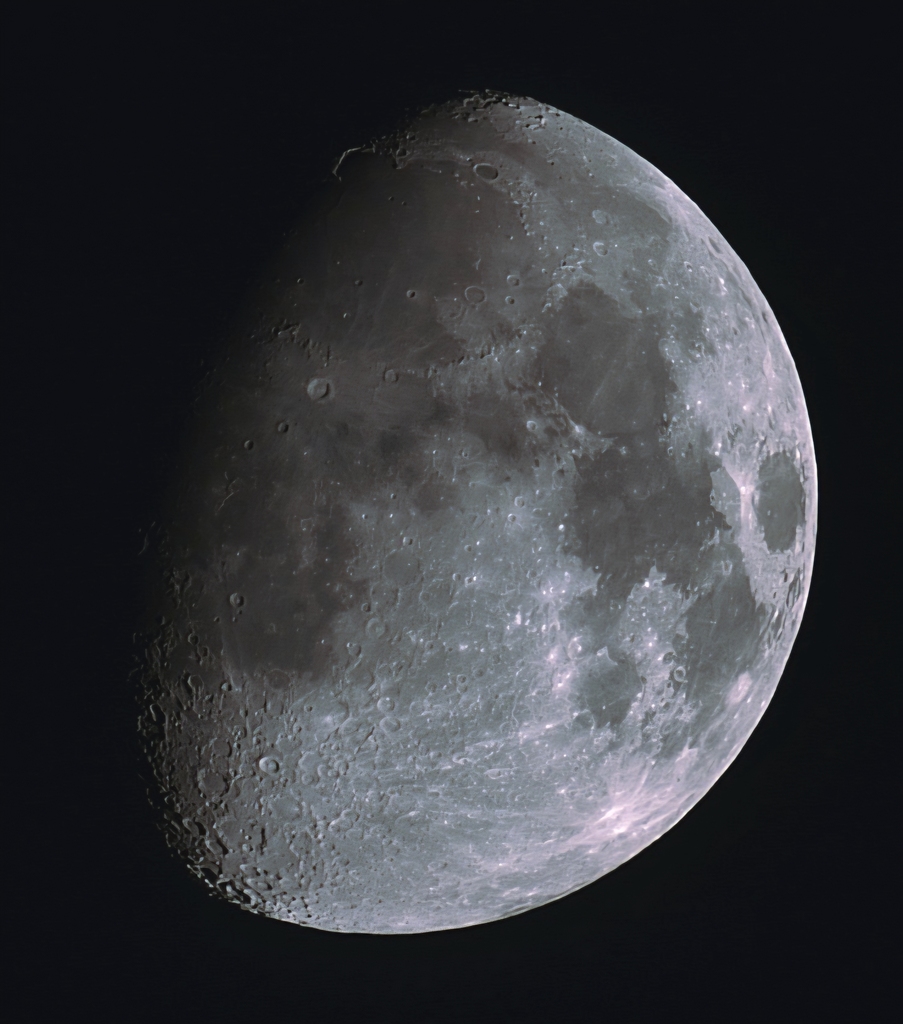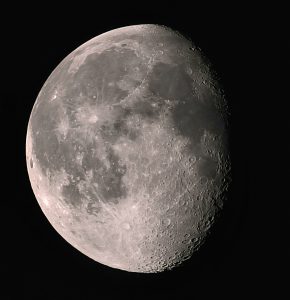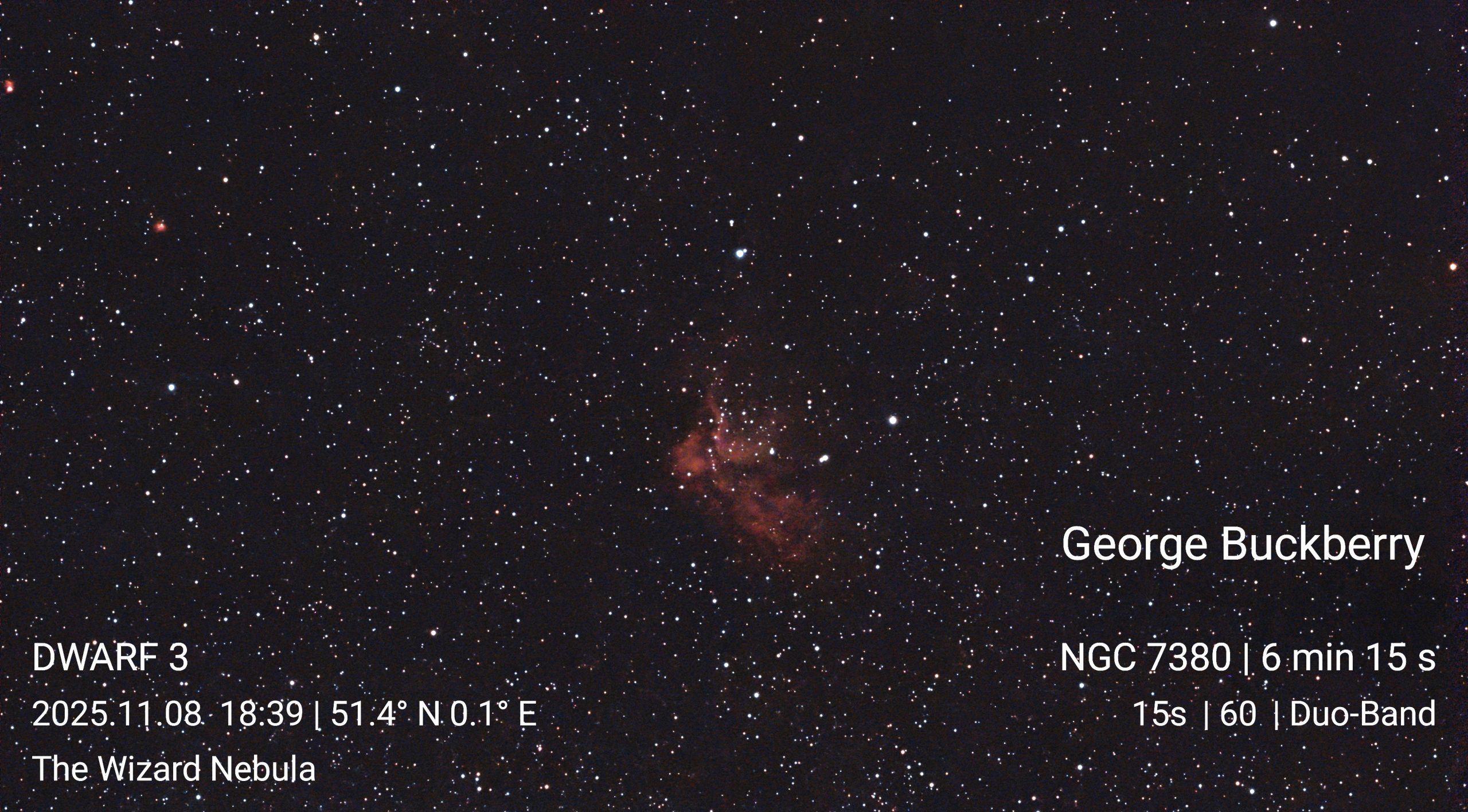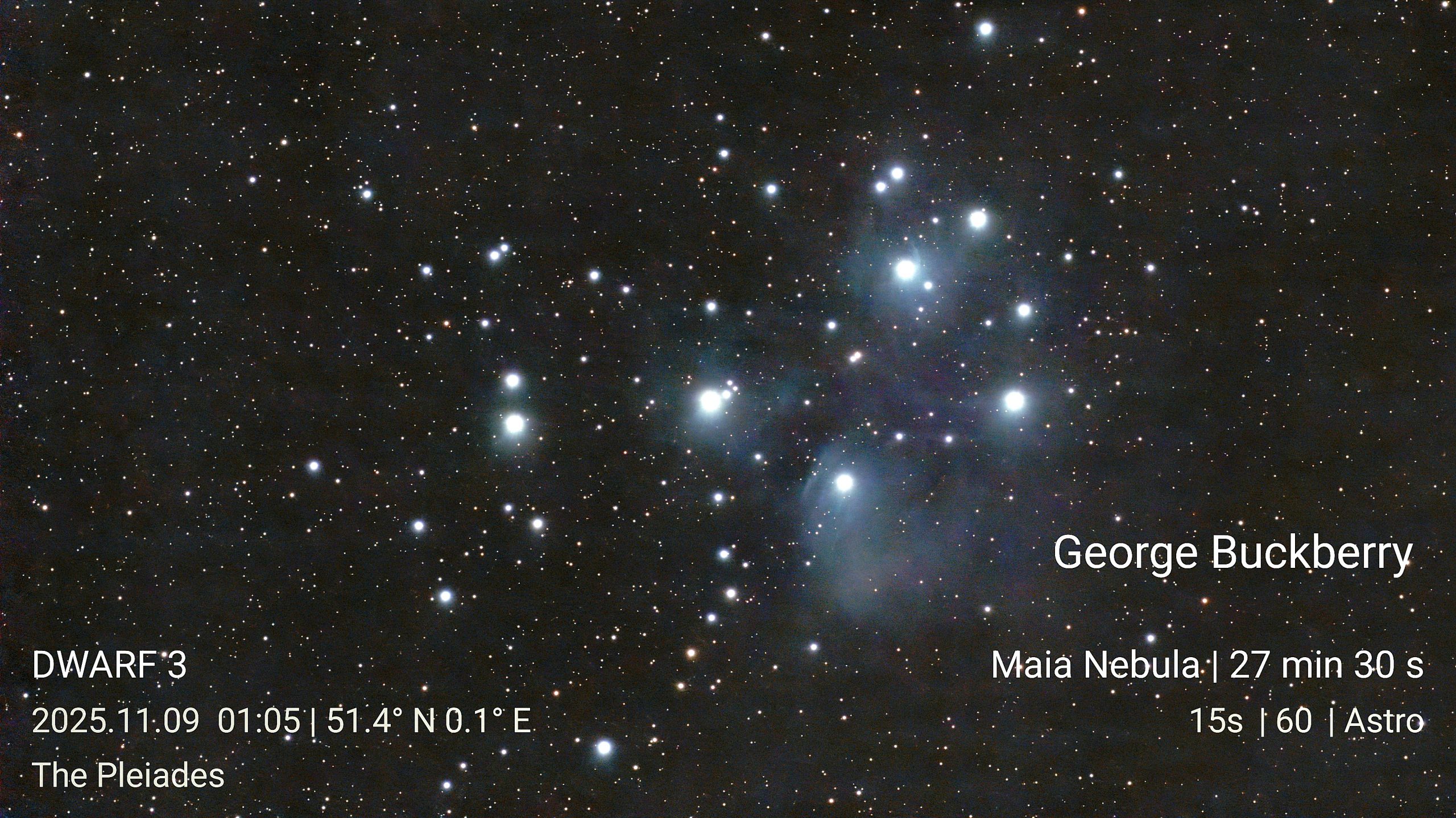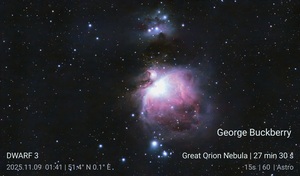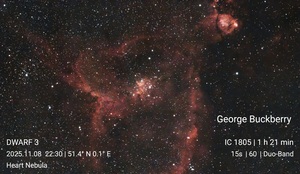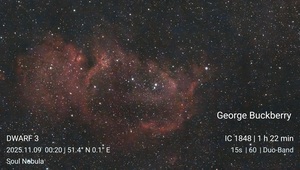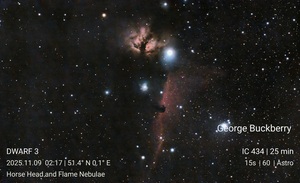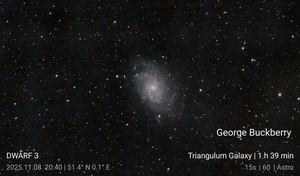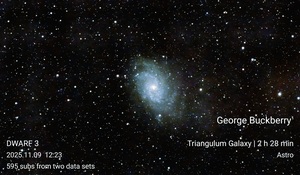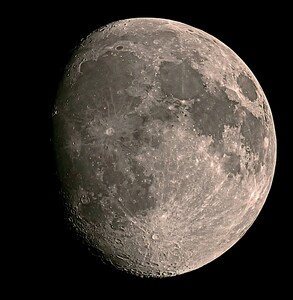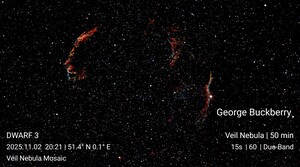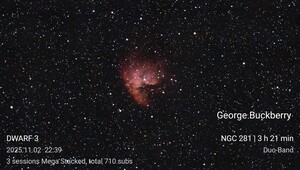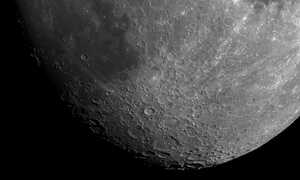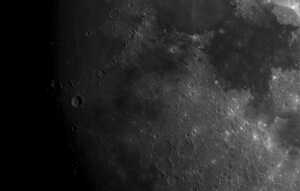[et_pb_section fb_built="1" _builder_version="4.27.4" _module_preset="default" global_colors_info="{}"][et_pb_row _builder_version="4.27.4" _module_preset="default" global_colors_info="{}"][et_pb_column type="4_4" _builder_version="4.27.4" _module_preset="default" global_colors_info="{}"][et_pb_text _builder_version="4.27.4" _module_preset="default" global_colors_info="{}"]
An absolutely stunning image of the Moon taken by member Neil Webster on the 29th November 2025.
MOON: Waxing Gibbous, 66.8% illuminated and 9.56 days old.
Neil acquired the image using an AA 115 APO, EQ6 R, ZWO ASI 290MM, and R/IR filter.
8 frames: each 90s x 31fps (best 20% selected)
Processed using AutoStakkert and Photo Shop.
[/et_pb_text][/et_pb_column][/et_pb_row][et_pb_row _builder_version="4.27.4" _module_preset="default" global_colors_info="{}"][et_pb_column type="4_4" _builder_version="4.27.4" _module_preset="default" global_colors_info="{}"][et_pb_image src="https://crayfordmanorastro.com/wp-content/uploads/2025/11/WhatsApp-Image-2025-11-30-at-09.36.55.jpeg" title_text="WhatsApp Image 2025-11-30 at 09.36.55" _builder_version="4.27.4" _module_preset="default" global_colors_info="{}"][/et_pb_image][/et_pb_column][/et_pb_row][et_pb_row column_structure="1_2,1_2" _builder_version="4.27.4" _module_preset="default" global_colors_info="{}"][et_pb_column type="1_2" _builder_version="4.27.4" _module_preset="default" global_colors_info="{}"][et_pb_image src="https://crayfordmanorastro.com/wp-content/uploads/2025/11/WhatsApp-Image-2025-11-30-at-09.38.01.jpeg" title_text="WhatsApp Image 2025-11-30 at 09.38.01" _builder_version="4.27.4" _module_preset="default" global_colors_info="{}"][/et_pb_image][/et_pb_column][et_pb_column type="1_2" _builder_version="4.27.4" _module_preset="default" global_colors_info="{}"][et_pb_image src="https://crayfordmanorastro.com/wp-content/uploads/2025/11/WhatsApp-Image-2025-11-30-at-09.39.30.jpeg" title_text="WhatsApp Image 2025-11-30 at 09.39.30" _builder_version="4.27.4" _module_preset="default" global_colors_info="{}"][/et_pb_image][/et_pb_column][/et_pb_row][et_pb_row column_structure="1_2,1_2" _builder_version="4.27.4" _module_preset="default" global_colors_info="{}"][et_pb_column type="1_2" _builder_version="4.27.4" _module_preset="default" global_colors_info="{}"][et_pb_text _builder_version="4.27.4" _module_preset="default" global_colors_info="{}"]
Craters Clavius, Tycho etc.
Check out Neil's Flickr page at https://www.flickr.com/photos/137388222@N05/
[/et_pb_text][/et_pb_column][et_pb_column type="1_2" _builder_version="4.27.4" _module_preset="default" global_colors_info="{}"][et_pb_text _builder_version="4.27.4" _module_preset="default" global_colors_info="{}"]
Copernicus, Archimedes, Plato, Montes Apenninus, Montes Caucasus and Alpine Valley.
[/et_pb_text][/et_pb_column][/et_pb_row][/et_pb_section]

